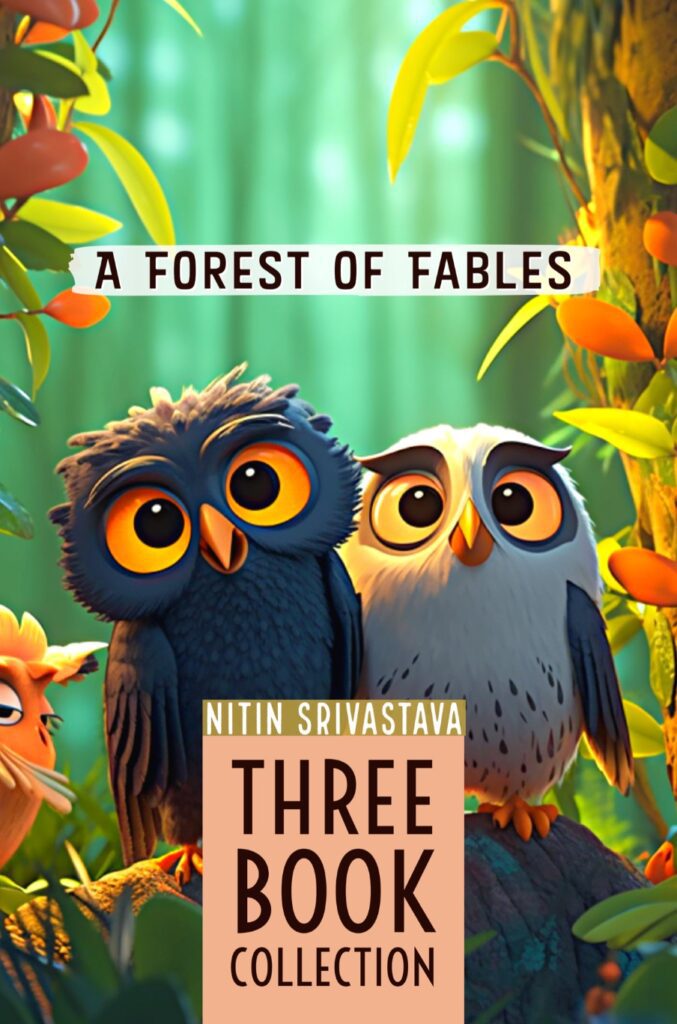The next day, Aindri sat cross-legged on her bed, a TV connected to her father’s laptop propped up before her. One by one, her friends’ faces popped up on the screen: Ayush from Ayodhya, Meera from Telengana, Rahul from West Bengal, and Ananya from Maharashtra.

“Welcome to our Ram Navami adventure!” Aindri announced, her eyes shining with excitement. “Let’s start our tour in Ayodhya. Ayush, what’s Ram Navami like in Lord Ram’s birthplace?”
Ayush’s face filled the screen, his gestures animated as he spoke. “Oh, Aindri, you should see it! The streets of Ayodhya come alive during Ram Navami. There are grand processions with decorated chariots, and the air is filled with the chanting of ‘Jai Shri Ram!’ Devotees from all over India come to celebrate Ram Navami here.”

Aindri could almost hear the jubilant cries and see the colourful chariots rolling through ancient streets. “That sounds amazing, Ayush! Meera, what about in Tamil Nadu?”
Meera, usually shy, spoke softly but with clear enthusiasm. “In Telengana, we celebrate Ram Navami with a beautiful ceremony called Kalyanotsavam. It’s like a celestial wedding of Lord Rama and Sita. The air is filled with the scent of jasmine and the sound of Vedic chants. In Rameshwaram, which is in Tamilnadu, people visit the temple to seek blessings from both Lord Ram and Lord Shiva during Ram Navami.”

“A divine wedding? How romantic!” Aindri sighed dreamily. “Rahul, what’s special about Ram Navami in West Bengal?”
Rahul held up a sketchbook, flipping through pages of intricate drawings. “In West Bengal, we have a Ram Navami Mela. Artisans create amazing clay models that show scenes from Ramayana. Look, I drew these based on last year’s Ram Navami celebrations. Aren’t they incredible?”
Aindri leaned closer to the screen, marvelling at the detailed sketches. “They’re beautiful, Rahul! And finally, Ananya, how do you celebrate Ram Navami in Maharashtra?”

Ananya, always tech-savvy, shared her screen to show a short video clip. “In Maharashtra, we have a special Ram Navami tradition called Rama Navami Nritya. It’s a dance drama that tells the entire story of the Ramayana. Watch this!”
As Aindri listened to her friends describe the diverse Ram Navami celebrations across India, she felt a growing connection to the festival’s deeper meaning. Ayush’s tales of Ayodhya’s grand processions, Meera’s description of the Kalyanotsavam in Telengana and Tamil Nadu, Rahul’s artistic renditions of West Bengal’s clay models, and Ananya’s showcase of Maharashtra’s Ram Navami Nritya all painted a vivid picture of the festival’s significance.
“Friends,” Aindri said as their sharing came to an end, “all of your stories are so beautiful. But I feel like I’m still missing something. How can I truly understand the spirit of Ram Navami?”
Her friends were quiet for a moment, and then Meera spoke up. “Aindri, why don’t we each share one key lesson we’ve learned from the story of Lord Ram? Something that connects to Ram Navami’s meaning?”
The others nodded in agreement. Ayush went first: “Lord Ram’s unwavering dedication to dharma – his sense of duty and righteousness – is what I admire most. Even when faced with difficult choices, he always did what was right.”
Rahul added, “For me, it’s the power of devotion and friendship, like the bond between Ram and Hanuman. It shows us the strength we can find in unity and faith.”
“I’m inspired by Sita’s resilience,” Ananya said. “She faced so many challenges but never lost her dignity or her love for Ram. It reminds me to stay strong in tough times.”
Meera concluded, “And I think about how Ram treated everyone with respect and kindness, from the greatest kings to the humblest forest-dwellers. It teaches us to value every person we meet.”
As Aindri listened, she felt a warmth spreading through her chest. “Thank you all,” she said softly. “I think I understand now. Ram Navami isn’t just about celebrating Lord Ram’s birth; it’s about carrying his values with us daily – being truthful, kind, brave, and respectful.”





